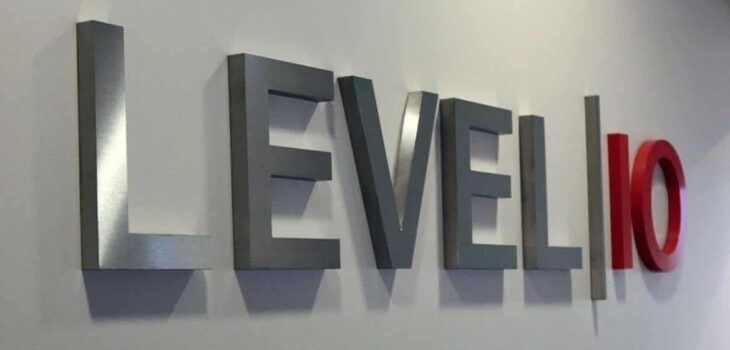 Business
Business
The Ultimate Guide to Non-Illuminated Signs for BWhat Are Non-Illuminated usinesses
- by carenclean
When it comes to business signage, not all signs need to light up to stand out. Non-illuminated signs are a timeless and versatile solution that has helped countless brands capture attention and communicate effectively, even without the glow of lights. Whether you’re a business owner considering signage options or simply curious about the benefits, this guide dives deep into non-illuminated signs, why they matter, and how they can boost your business.
From discussing key types of non-illuminated signs to their applications, costs, and tips for choosing the right design, this post will cover everything you need to know to make an informed decision. Let’s start by defining non-illuminated signs and how they differ from their illuminated counterparts.
What Are Non-Illuminated Signs?
Non-illuminated signs are, simply put, signage solutions that do not involve internal or external lighting components. Unlike illuminated signs (such as LED, neon, or backlit signs), non-illuminated signs rely solely on their materials, colors, and designs to make an impact. Examples include printed banners, metal panels, wood-carved signage, and etched glass.
These types of signs are commonly used in storefronts, offices, shopping malls, and outdoor displays where lighting requirements aren’t essential. Their simplicity often makes them visually appealing and cost-efficient, providing businesses with a high-quality branding tool.
Now, let’s explore specific types of non-illuminated signs and their unique applications.
Popular Types of Non-Illuminated Signs
1. Custom Vinyl Non-Illuminated Signs
Vinyl is one of the most commonly used materials for non-illuminated signs due to its affordability and versatility. Vinyl signs can be printed with vivid colors and intricate designs, making them suitable for promotions, window displays, or events.
- Example Use Case: A clothing boutique might install a vibrant, non-illuminated vinyl sign on their glass window, providing clear branding during store hours.
2. Cut Metal Letters
Cut metal letters are polished, sleek, and incredibly durable. These signs are commonly used for outdoor branding on building facades and office walls due to their professional appearance and weather-resistant properties.
- Example Use Case: Corporate offices often use cut metal letters on their external walls for a clean and elegant look.
3. Carved Wood Signs
Carved wood signs are perfect for businesses aiming to exude a rustic or artisanal vibe. With proper maintenance, they can last for years while offering a stylish, handcrafted appearance.
- Example Use Case: A farmhouse-style café may choose a carved wood non-illuminated sign to align with its rustic atmosphere.
4. Painted Non-Illuminated Signs
Painted signs, often hand-painted or stenciled, offer a classic aesthetic that has stood the test of time. These signs are popular in both indoor and outdoor spaces where a personalized, artistic touch is needed.
- Example Use Case: An artist’s gallery may use a painted sign to reflect creativity and character.
5. PVC or Acrylic Signs
These are lightweight and affordable options often used indoors for directories, conference room labels, and other functional signage.
- Example Use Case: A co-working space might use acrylic non-illuminated signs to guide members throughout the facility.
Now, we’ll explore why businesses might choose non-illuminated signs when illuminated ones are seen as more eye-catching.
Advantages of Non-Illuminated Signs
While illuminated signs are often chosen for their glow, non-illuminated signs come with a set of unique advantages that cannot be ignored. Here’s why businesses are investing in these versatile options:
Cost-Effectiveness
Non-illuminated signs are significantly cheaper to produce and maintain compared to illuminated signs. There are no wiring, energy sources, or lighting fixtures needed, making them a practical choice for businesses on a budget.
Versatility
These signs can be installed virtually anywhere. They are not dependent on electricity, making them ideal for spaces lacking power outlets or businesses that prefer a minimalist appearance.
Durability
Since they lack electrical components, non-illuminated signs are less likely to require repairs. Many of these signs are built from strong materials like metal, wood, and acrylic, ensuring longevity even in harsh weather.
Simplicity of Design
Sometimes, less is more. Non-illuminated signs can provide a clean, understated look that allows the business logo or messaging to stand out naturally without extra features distracting from the design.
Eco-Friendliness
Because they do not require electricity, non-illuminated signs are more environmentally friendly. Businesses looking to minimize their energy footprint often turn to these signage options.
Non-Illuminated Signs for Outdoor Use
For businesses operating during daytime hours, non-illuminated outdoor signs can be just as effective as illuminated ones. The key to success lies in choosing the right materials and optimizing visibility.
- Durability: Outdoor signs must withstand weather conditions, so materials like metal, acrylic, and treated wood are the top choices.
- Contrast: A high contrast between text and background enhances legibility. For example, white text on a dark-colored surface can grab attention even from a distance.
Outdoor non-illuminated signs are particularly suited for retail stores, farmers’ markets, and cafes relying on natural light to highlight their signage.
Why You Should Consider Custom Non-Illuminated Signs
Customization is one of the greatest strengths of non-illuminated signage. Businesses can tailor designs, materials, and dimensions to fit their branding guidelines perfectly.
How Customization Helps Your Brand
- Reinforced Branding: Incorporating company colors, fonts, and logos ensure recognizable branding.
- Design Flexibility: Whether you want simple text or intricate designs, non-illuminated signs offer incredible flexibility.
- Special Finishes: Options like matte, polished, or textured finishes can elevate the overall aesthetic.
Pro Tip
Ensure your custom non-illuminated sign design communicates your brand’s core messages at a glance. The simpler the design, the easier it is for passersby to remember.
Non-Illuminated Signs vs. Illuminated Signs
Before concluding, it’s essential to briefly revisit the debate of non-illuminated vs. illuminated signs. Knowing when to use each signage type can help you get the most value for your investment.
When to Use Non-Illuminated Signs
- You’re operating during daylight hours or in well-lit spaces.
- Your brand aesthetic prioritizes simplicity and eco-friendliness.
- You want to keep costs low while maintaining quality.
When to Use Illuminated Signs
- Nighttime visibility is critical, such as for bars, gas stations, and 24/7 stores.
- Your brand relies on flashy, high-tech design cues.
- Power sources and maintenance costs are not an issue.
However, even in businesses that rely on illuminated signs, non-illuminated options can complement specific areas, such as indoor branding during operational hours.
Choosing the Right Non-Illuminated Sign for Your Business
Ultimately, choosing the right non-illuminated sign will depend on your industry, budget, and branding needs. When selecting a non-illuminated sign, make sure to:
- Opt for Durable Materials based on your location.
- Work with Experienced Designers to create a professional look.
- Focus on Visibility by prioritizing contrast and simplicity.
Still need expert guidance? Many sign manufacturers offer design and installation consultations, ensuring you get the most value for your investment.
The Power of Simplicity in a Bright World
Non-illuminated signs prove that you don’t always have to shine the brightest to stand out. For businesses seeking timeless appeal, cost efficiency, and versatile branding, these signs offer a winning combination. Whether you’re showcasing your storefront, guiding customers through a space, or delivering a minimalist aesthetic, non-illuminated signage can be the ideal choice.
Don’t overcomplicate your decision—simple yet effective might be exactly what your brand needs.









